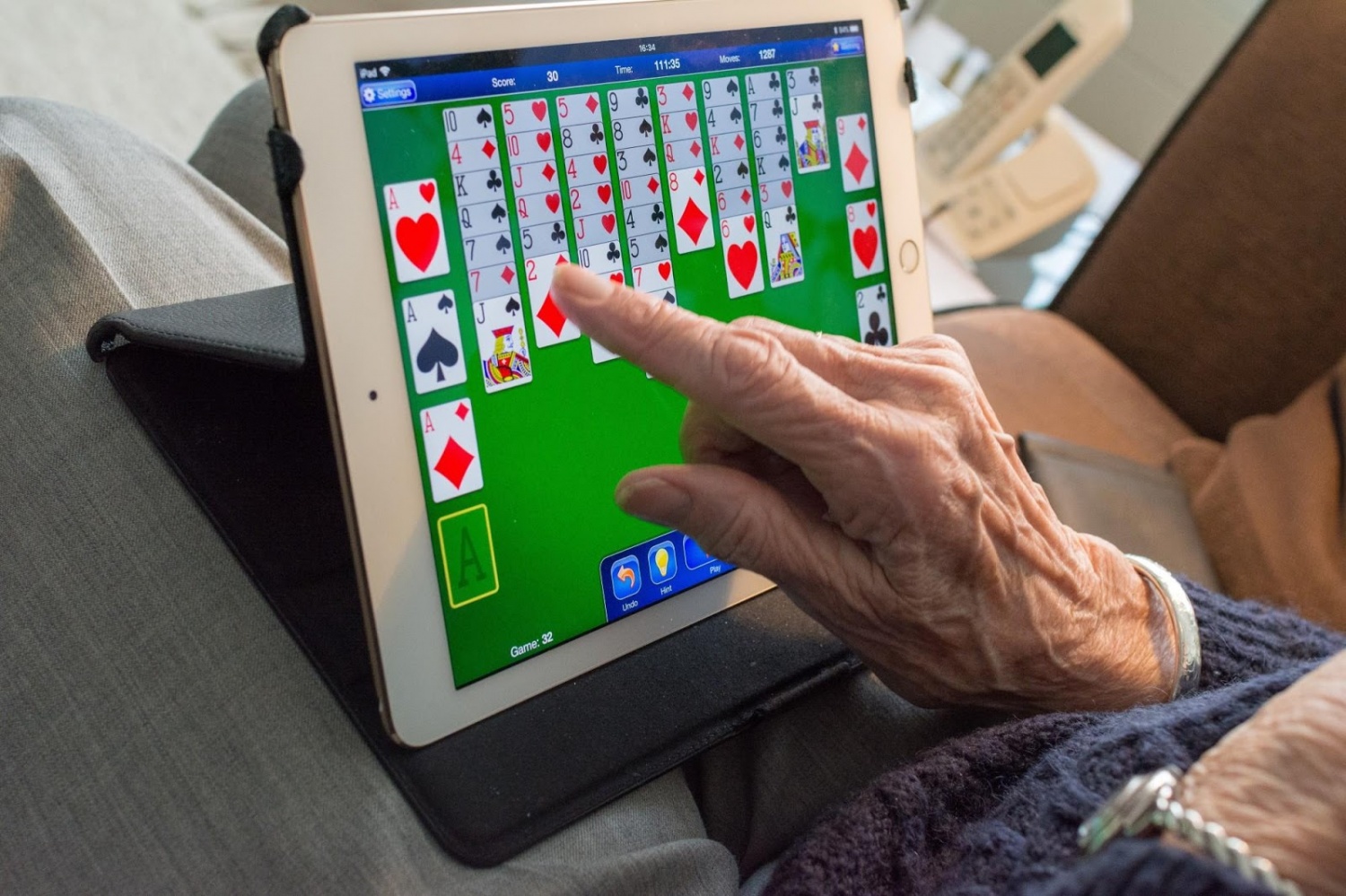Counsel & Heal Buzz
12 Tips to Help Seniors Become Computer Savvy

(Photo : 12 Tips to Help Seniors Become Computer Savvy)
A certain degree of being computer savvy is essential for making it in the modern world. But it's incredibly difficult to get there when you didn't grow up immersed in it.
This is a problem many seniors face as they try to adjust to today's society. If you're a person without those limitations, you may want to step in and help. But before you do that, a question:
Why Bother?
Younger generations without the strong, positive influence of an older person may get locked into tunnel vision thinking. They don't realize these older citizens are out there in need of help with things they take for granted.
There is much to be gained from turning that tide. And if you feel like working with a computer or smartphone is second-nature, then it's time to step up and do something about it. Here's why you should.
Because Seniors Have Much to Offer
Older and younger generations may not have the same personal beliefs or political preferences. But they still have a lot to learn from one another. In fact, only by learning from one another can we improve our society.
And seniors have a lot from which you can learn. Furthermore, they usually want to learn from you so they're a receptive audience.
To Keep Seniors from Being Taken Advantage Of
The threats of technology can be scary if you're comfortable with it. If you feel lost behind a computer or smartphone, it's downright terrifying! That's a problem when so much commerce and personal business is conducted online by necessity.
Stepping up to help seniors notice these outside threats lowers the chances they'll be taken advantage of. And the more people who are knowledgeable of potential threats, the less likely scammers and thieves will be successful in their efforts.
To Bridge Our Generational Gaps
There's no question different generations have gaps in what they know and believe to be true. The longer we allow those gaps to stand, the harder it will be to come together as a society.
Most seniors understand quality-of-life is about personal growth and evolution. Younger generations benefit from this as well. But the only way to get there is to shorten the chasms that separate us.
Now that we've covered why you should help seniors better understand technology, let's look at the particulars of how to do it. Follow these steps for success!
1. Start Where They Are
Most seniors aren't coming to the table with zero knowledge. Keep in mind that computers have existed for over a half-century. Today's older generations are not raw clay.
That said, there's a big difference between the time of Turing and what we know as of today's Internet. So work to understand what the seniors already know about technology.
Try to connect the dots as well as you can. And consider starting with a more intuitive piece of technology, such as a smartphone. Here are some of the best smartphones for seniors to help in the effort.
2. Talk About Why
One of the hardest obstacles to overcome when teaching seniors about modern tech is helping them to understand why it's relevant. Smartphones for elders, in particular, have had a pretty steep learning curve over the last 10 years.
It's not uncommon to see 70- and 80-year-olds purchase one only to have their younger grandkids show them how to turn it on and set up an account. But if you can emphasize the "why" behind certain technologies, it gets a lot easier to get the senior invested in using them.
In the case of smartphones, it's important to note that smartphones are not just "phones." They make it easier to pay bills, set travel arrangements, get work done, keep control over your budget, and any host of activities seniors will find useful.
3. No Jargon
Want a senior to zone out and give up on modern technology? Start throwing around acronyms and programming language and trending memes.
They need to learn how to walk with the technology before they can take off running. So make sure you avoid technical words until they're comfortable and familiar with the lingo. Furthermore, be consistent in the language choices you make.
4. Do Not Move Too Quickly
Getting a senior from novice to tech-savvy requires proper pacing in how you deliver the information. Don't dump too much on them too quickly. Before talking to them, consider all the things you take for granted that they probably don't know.
Be careful about how you dispense this information. And use clarifying statements such as, "Does that make sense?" before moving onto a more challenging concept.
5. Repetition
One of the best things you can do when teaching "computers for seniors" courses is repeated basic functions until they go from concept to rote activity. An example of this might be the Alt+Tab function for switching between screens.
Many seniors think about writing a memoir for their loved ones to read when they're gone. Have them open a Word document and an Internet browser window.
Teach them how to toggle back and forth from one window to the next and have them do it over and over again. Then, explain when they're writing and run into something they need to look up, they can just switch from one screen to the next by hitting Alt+Tab. This will get them used to program-switching and keyboard commands, two very useful activities when using technology.
6. Pause for Questions
Part of pacing the lessons properly is knowing when to slow down and allow seniors to clarify the things they don't understand. So try not to cover too many concepts before pausing and allowing your senior student to ask any questions that come to mind.
You'll also want to be open to questions during instruction. But be careful with this. You don't want them to get ahead of the lesson and derail progress by asking questions that'll only be relevant after they understand what you're trying to teach them at the moment.
7. Encourage Independent Application
Practice doesn't make perfect. But it certainly makes better. So give your senior time to solidify the concepts you've taught them on their own.
Explain it's okay if they get confused by something to simply note it and ask you during the next session. Also during this stage, you don't want to get too outlandish with the tools you're having them use.
A senior used to IE, for instance, could be derailed if you put them on your MacBook Pro's Safari browser. Here's an Internet Explorer (Mac) download if you need to install a more familiar and easier-to-use resource on a computer to avoid teaching them something on a program they'll seldom use.
8. Arm Yourself with Resources
It's easy to run into challenges when crossing the generational communication divide. Don't be ashamed if you hit a roadblock. Instead, use outside resources to help solidify what you're trying to teach and get the senior through the challenge.
One great way of doing this is to arm yourself with resources that are specifically tailored to seniors. In the states, the AARP offers a variety of resources as does Amazon and other book retailers.
9. Give Them Some Sizzle
As you're working with a senior, don't make it all about instruction. Set aside some time to show them how technology can really wow them.
One way of doing this is to let the seniors see something special to them on Google Earth or some other form of satellite software. This could be an old house they once lived in that's still standing or an obscure location that means a lot to them personally.
10. Share Challenges You Have Overcome
Try to get into the mindset of the person you were when you first interacted with technology. If you're a Gen-Xer trying to teach his elderly grandfather how to use the Internet, you might recall being in high school and setting up that first email account.
You likely had a lot of apprehensions and a lot of excitement in those days. Share the challenges that you've overcome, including your vulnerabilities at the time. If you still have some, share those as well.
Doing so will make the senior feel validated in his fears. But it'll also give him the confidence that, yes, he can overcome it as he has so many other things in his life.
11. Show How Different Devices Can Work Together
Apple and Android have enabled their phones and tablets to work seamlessly with TVs, laptops and desktop computers. This not only has a bit of "wow" to it, but it also demonstrates the efficiency of modern technology.
Remember when we talked about the "why" of learning tech? This is it!
12. Stay in Touch
Technology has changed exponentially in the last 10 years with the rise of the lightning-fast Internet and social media. There's no reason to think it won't change further in the next 10.
Don't let your senior student stagnate. Teach them that the one constant of technology is Change and that to be truly "competent" with it, you have to commit to life-long learning with it.
Promoting a Computer Savvy Culture Keeps Us Connected
By doing your part to promote a computer-savvy culture, you're putting society in a better place than where it currently is. You're showing older generations they still have a way to make an impact and have their voices heard. And if you help them see it, they'll be more likely to listen to your voice as well.
Contributing to the technological know-how of another generation is always a worthwhile endeavor. And for more help on how to do that, make sure you check out our other Science/Tech posts at Counsel & Heal.
* This is a contributed article and this content does not necessarily represent the views of counselheal.com









Join the Conversation